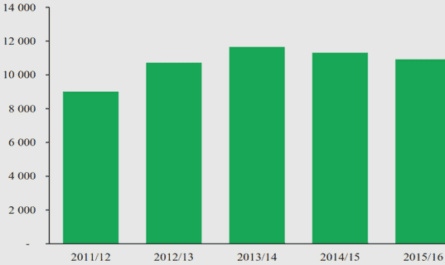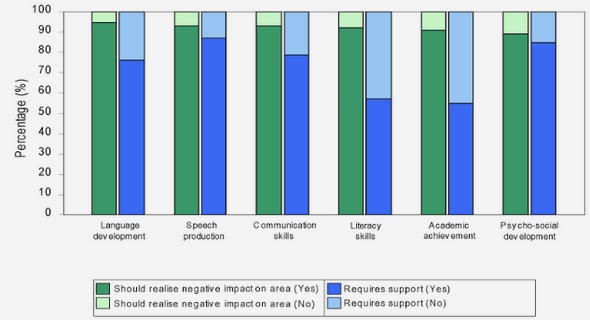Get Complete Project Material File(s) Now! »
Feeding behavior and ecological role
The Resplendent Quetzal is an important seed disperser. As the other members of the family Trogonidae, P. mocinno adults are mainly frugivorous; however they feed their chicks also with insects and small vertebrates (Snow, 1981). Adults have a specialized behavior on feeding, probably in coevolution with the plant family Lauraceae, and it has also been suggested a relationship between the maturation of fruits of different species and the bird’s altitudinal migrations (Wheelwright, 1983). The size of P. mocinno lead the bird to feed on relatively large fruits (i.e. 35 x 18 mm size of Beilschmiedia sp. and Nectandra sp.) and regurgitate seeds (Santana & Milligan, 1984).
Members of the Trogonidae family have weak legs, which hampers hopping and reaching for fruits from perch, as do other species feeding on the same fruits, like toucanets. Instead of feeding from perch, P. mocinno use the method of sallying (Santana & Milligan, 1984). Sallying is an aerial foraging mode consisting on catching insects or fruits in the air, but returning to a perch to feed (Avila et al, 1996). Before an individual sally, they scan their surrounding area for fruits, and then they usually take only one fruit per flight. Thus, the energy obtained from that unique fruit must compensate the costs of sallying for it. In order to meet this requirement, it is important for the individuals to recognize the quality of a fruit and be selective (avoiding small size, early stage of ripeness, low energy, low nutrient content or poor location) (Santana & Milligan, 1984). Individuals generally take ripe fruit, discarding the rotten ones (Avila et al, 1996). The amount of resources available for each species in an area, is linked to their food selection method, and also could be linked to other aspects of the species ecology. For example, Resplendent Quetzals are altitudinal migrators, while toucanets are not (Santana & Milligan, 1984). Pharomachrus mocinno individuals generally regurgitate the seeds in viable condition 15-30 min after ingestion. Generally P. mocinno individuals spent less than 2 min per foraging visit to fruiting trees (Wheelwright, 1991), so the seeds have a great possibility to be regurgitated in a place away from the feeding tree. The extreme specialization of P. mocinno to feed on some plant species, combined with the highly selective behavior, choosing only high quality fruits, makes of P. mocinno a key species on the regeneration of the cloud forest.
The chicks are mainly insectivorous, but also feed on small vertebrates. Adults feed the chicks during the first 10 days after hatching, including insects (mostly beetles, lepidopteran larvae, orthopterans and odonatans), small lizards and snails (Avila et al, 1996).
Pharomachrus mocinno as a flagship species
Charismatic animal species, usually large vertebrates, have been used to attract interest and to focus conservation efforts. Organisms with these characteristics are known as flagship species. Flagship species can be used to lead a conservation campaign because it awakens public interest and sympathy (Simberloff, 1998). Most flagship species are large mammals, other groups as birds are uncommon. One exception is the Resplendent Quetzal, which has been widely used as flagship, being the symbol of natural reserves and conservation campaigns along its area of occurrence (Figure 17). Beside the attraction of conservation efforts, conservation areas having populations of the Resplendent Quetzal, benefit from the visitors who arrive with the intention to observe the species, being an important source of income helping to the continuation of the protection activities. At the same time, the protection of the Resplendent Quetzal helps to protect the cloud forest where it occurs, including other endangered species who depend on this habitat type.
The Resplendent Quetzal cohabits with other species, which also depend on the cloud forest to occur. The cloud forest is one of the most biodiverse habitat type of tropical areas, in addition, as other mountain forests of the zone, has a high degree of endemism. Some bird species endemic to mountain forests, comprising the cloud forest of the study area are, the Blue-throated Motmot (Aspatha gularis) and the Highland Guan (Penelopina nigra) among others. These species, together with P. mocinno interact between them, competing for ecological resources, as they are part of the same ecological community.
Potential methods to study P. mocinno in its habitat
The greater challenge to make precise observations of P. mocinno is the height and density of the forest canopy in which individuals maintain their activities. Individuals dwell high in the canopy almost all the time, excepting throughout the nesting season, when they move and vocalize at lower heights when looking for nest-sites, or vocalize directly from the nests. Additionally, their plumage, colors and their perching behavior, staying static for long periods, make observations complicated (LaBastille & Allen, 1969).
Propagation of the vocalizations through the cloud forest
Propagation experiments were carried out at “Los Andes” to quantify the modification of the territorial, alarm, courtship and contact vocalizations emitted by P. m. mocinno at different distances.
Sounds were synthesized on the basis of representative natural vocalizations previously recorded. Synthesized vocalizations were built using the graphic synthesizer of the Avisoft SASLabPro software version 4.15 (Avisoft Bioacoustics, R. Specht–version 3.74) that extracts the frequency contour of the fundamental frequency, the relative amplitude of the different harmonics and the amplitude envelope of the natural vocalization. This procedure ensured to use sounds that do not contain any background noise. One synthetic sound was built for each of the four vocalization types, and edited in a single sound file with 15 repetitions of each vocalization (Figure 23). The series of synthetic sounds was played back with a loudspeaker FoxPro Fury 2 with sound pressure levels corresponding to the estimated natural levels of the calls emitted by the species (80 dBSPL for the territorial call, 82 dBSPL for the alarm call, 69 dBSPL for the courtship call and 56 dBSPL for the contact call, all measured at a distance of 1m from the loudspeaker). The propagated sounds were recorded at a sampling frequency of 44.1 kHz and a 16 bit dynamic with a Sennheiser ME-62 K6 microphone connected to a Marantz PMD 661 recorder.
Modification of the frequency spectrum
The most modified frequency spectra according to propagation distance were those of the contact and courtship vocalizations, with a high degradation at 128 m. The less degraded frequency spectrum was the one of the territorial vocalization, and then of the alarm vocalization. The results for all distances from the source are presented in Table 4 and Figure 7.
Modification of the frequency modulation
The most modified frequency modulation was that of the second note (high pitch) of the alarm vocalization. The most resistant frequency modulation was that of the TL note of the territorial vocalization (low pitch). The results of RV coefficients for all distances are presented in Table 4 and Figure 7.
Song diversity among Pharomachrus species
The acoustic analysis showed a relatively important diversity among the Pharomachrus species, suggesting that each taxa bears a species signature in its song, a phenomenon commonly observed in birds but also in other singing species (Obrist et al. 2010). In particular, we found a difference in the acoustic parameters of P. mocinno and P. costaricensis, similar as it has been reported for other learning and non-learning species where species status has been promoted (Cadena and Cuervo 2010; Millsap et al. 2011; Sandoval et al. 2014, 2017). The correct classification between the two taxa was higher than the classification expected by chance as revealed by the LDA classification and confirmed by the RF classification among all Pharomachrus taxa. As non-passerine birds, species of Pharomachrus are supposed not to learn their vocalizations, so such differences between species of the family probably arise from genetic drifts, acoustic adaptation to environments, or sexual selection cumulated by years of separation. In numerous species, body size is negatively correlated to sound frequency, a larger animal producing lower frequencies (Fletcher 2004; Martin et al. 2011). Here the peak, median, lowest and highest frequencies of the territorial vocalization of males of P. mocinno were higher than in P. costaricensis, when the first is significantly larger and heavier than the second (Solórzano and Oyama 2009). Such discrepancy between acoustics and morphology among-taxa has been observed for other bird species (Laiolo and Rolando 2003) and might suggest the occurrence of physiological or environmental evolutionary constraints. The morphological difference existing between the two species could be the consequence of different sexual selective pressures within the populations of P. mocinno and of P. costaricensis. It may also indicate that following a potential founder group, with representation of larger males, this characteristic are maintained by a sexual selection process (Solórzano 2003). Moreover, plotting the discriminant function scores with respect to latitude did not reveal trends that would suggest clinal variation due to intergradation.
Integrative taxonomy of the Resplendent Quetzal and implications for conservation
A strong and discrete molecular differentiation was found between the two former P. mocinno taxa (Solórzano et al. 2004; Solórzano and Oyama 2009), implying that there is no female mediated gene flow between the two subspecies. We reanalysed the mtDNA data set of Solórzano et al. (2004) to have the same descriptive statistics of genetic divergence with those described between closely related species in other lineages. The divergence we found between the two taxa (3.1%) is similar to that described between other bird sister-species (Frankham et al. 2010), and in particular within the Trogonidae (1-4% in ND2 for sister-species in the Neotropical genus Trogon (DaCosta and Klicka 2008), 10-13% in ND2 for sister-species in the Asian genus Harpactes (Hosner et al. 2010)). The International Ornithological Committee (IOC) taxonomy (Gill and Donsker 2017) for the genus Trogon was based on the results from DaCosta and Klicka (2008) and resulted in the elevation of several subspecies to species status (e.g. T. mesurus, T. ramoniamus). Yet, these taxonomic changes were only made for ‘traditional species’ that were not monophyletic in the phylogenetic hypothesis proposed by DaCosta and Klicka (2008). Monophyletic species (e.g. T. personatus, T. rufus) with strong genetic differentiation (8%) across their distribution were not split (Gill and Donsker 2017). The genetic differentiation between the two P. mocinno subspecies is 3.1% for the analysed 255 bp of the Control Region fragment which usually has a comparatively higher substitution rate than protein coding genes in birds (Lerner et al. 2011). Furthermore, it could be difficult to representatively estimate the genetic divergence from such a short fragment. From a phylogenetic perspective, the two subspecies are reciprocally monophyletic and diverge from each other by a level of genetic divergence that is the low end of the range of genetic divergence between undisputed species. Hence, to give a more accurate estimate of the biological status of these taxa, the analyses of characters linked to the evolution of reproductive isolation (biometrics, vocalizations) were necessary.
For ethical reasons, due to the fact that P. mocinno and of P. costaricensis are rare, endangered and highly protected in Guatemala, it was unfortunately not possible to conduct playback experiments to test whether the individuals perceive the differences revealed by the analysis as usually achieved in behavioural experiments (Freeman and Montgomery 2017). Nevertheless, previous playback experiments showed that males of P. mocinno could respond to territorial vocalizations of P. costaricensis (Solórzano and Oyama 2009) as actually did other species of the family Trogonidae responding to the same vocalizations tested (2007 personal communication from S. Solorzano to PB, unreferenced). This male failure to discriminate an allospecific song has been reported in other bird species (Nelson 1998; Soha et al. 2016) and does not preclude that females could discriminate allospecific territorial and courtship vocalizations in a mate choice context (Seddon and Tobias 2007).
The obvious acoustic differences between P. mocinno and P. costaricensis are in agreement with the morphology differentiation (LaBastille et al. 1972; Schulz and Eisermann 2017; Solórzano and Oyama 2009), the genetic differentiation (i.e. lack of shared haplotype implying no female mediated gene flow; (Solórzano and Oyama 2009) and the absence of contact due to an important geographical and climatic barrier (Powell and Bjork 1995).
Table of contents :
Résumé
General Introduction
Conservation in terrestrial environments
Conservation in the tropics
Cloud forest
Cloud Forest in Guatemala
Avifauna of the cloud forest
Species Description
Pharomachrus genus
Pharomachrus mocinno
Morphological description
Natural History
Cultural importance
Pharomachrus mocinno as a flagship species
Ecological communities
Definition
Acoustic communities
Potential methods to study P. mocinno in its habitat
Traditional methods
Acoustic methods
Automatization of acoustic methods
Aims and outline
Gaps in our knowledge
General Problematics
Outline
Bibliography
Chapter 1: Vocal repertoire of Pharomachrus mocinno
1.1 Summary
1.1.1 Context
1.1.2 Problematics
Table of contents
1.1.3 Methods
1.1.4 Main results
1.1.5 Perspectives
1.1.6 Related communications and publications
1.2 Introduction
1.3 Material and methods
1.3.1 Vocalization repertoire
1.3.2 Propagation of the vocalizations through the cloud forest
1.4 Results
1.4.1 Vocalization repertoire
1.4.2 Propagation of the vocalizations of P. m. mocinno through the cloud forest
1.5 Discussion
1.6 Acknowledgements
1.7 Bibliography
Chapter 2: Vocalizations of the rare and flagship species Pharomachrus mocinno (Aves: Trogonidae): implications for its taxonomy, evolution and conservation
2.1 Summary
2.1.1 Context
2.1.2 Problematics
2.1.3 Methods
2.1.4 Main results
2.1.5 Perspectives
2.1.6 Related communications and publications
2.2 Introduction
2.3 Material and methods
2.3.1 Acoustic analysis
2.3.2 Molecular analyses
2.4 Results
2.4.1 Molecular analyses
2.5 Discussion
2.5.1 Song diversity among Pharomachrus species
2.5.2 Integrative taxonomy of the Resplendent Quetzal and implications for conservation
2.6 Acknowledgements
2.7 Bibliography
Chapter 3: Automatic acoustic monitoring of the Resplendent Quetzal Pharomachrus mocinno
3.1 Summary
3.1.1 Context
3.1.2 Problematics
3.1.3 Methods
3.1.4 Main results
3.1.5 Perspectives
3.1.6 Related communications and publications
3.2 Introduction
3.3 Materials and Methods
3.3.1 Study area
3.3.2 Automatic detection
3.3.3 Detection working range
3.3.4 Fluctuation of vocal activity in relation with environmental factors
3.3.5 Statistics
3.4 Results
3.4.1 Automatic detection
3.4.2 Detection working range
3.4.3 Fluctuation of vocal activity in regard to environmental factors .
3.5 Discussion
3.6 Acknowledgements
3.7 Bibliography
Chapter 4: Acoustic competition within a bird community: the case of the Resplendent Quetzal (Pharomachrus mocinno)
4.1 Summary
4.1.1 Context
4.1.2 Problematics
4.1.3 Methods
4.1.4 Main results
4.1.5 Perspectives
4.1.6 Related communications and publications
4.2 Introduction
4.3 Material and methods
4.3.1 Study site and data collection
4.3.2 Data analysis
4.3.3 Statistical analysis
4.4 Results
4.5 Discussion
4.6 Acknowledgements
4.7 Bibliography
Chapter 5: General discussion
5.1 Vocal behaviour of the Resplendent Quetzal
5.2 Acoustic monitoring of P. mocinno
5.2.1 Population monitoring
5.2.2 Adaptation of acoustic monitoring to different forests
5.2.3 Individual tracking
5.3 Habitat conservation of the Resplendent Quetzal
5.3.1 Habitat fragmentation and connectivity between forests
5.3.2 Climate change
5.4 Patterns of ecological competition in the community of P. mocinno
5.5 General conclusions
5.6 Bibliography
Acoustic behaviour of Pharomachrus mocinno
Chapter 6: Appendix
Appendix Chapter 2


